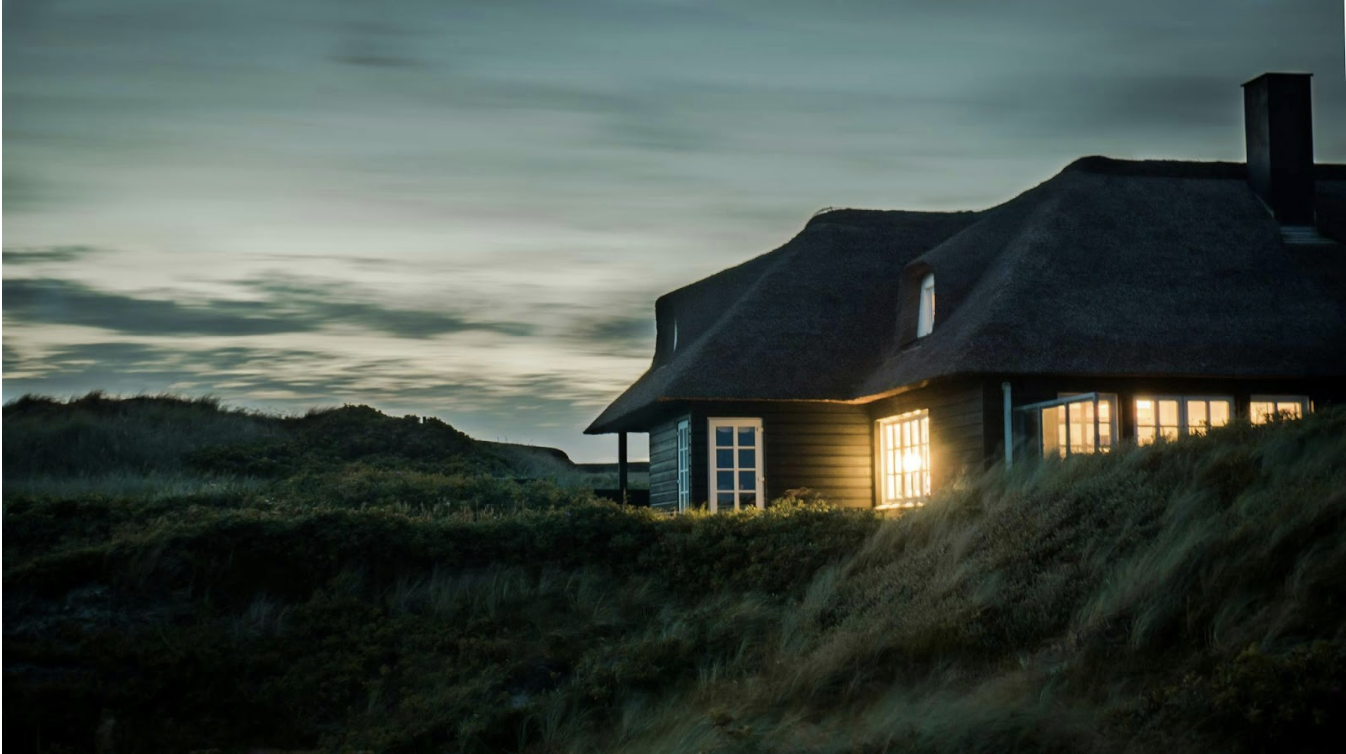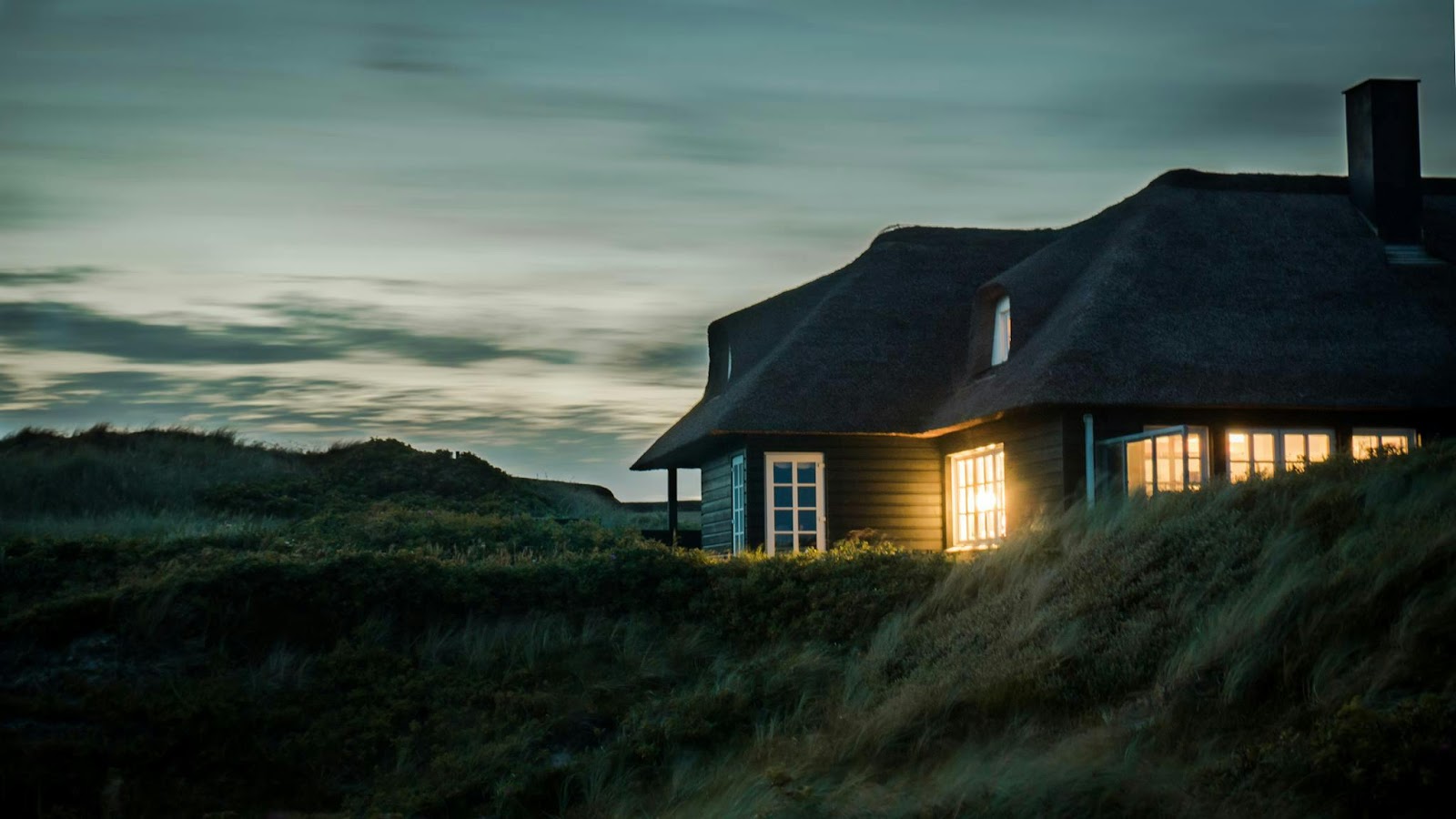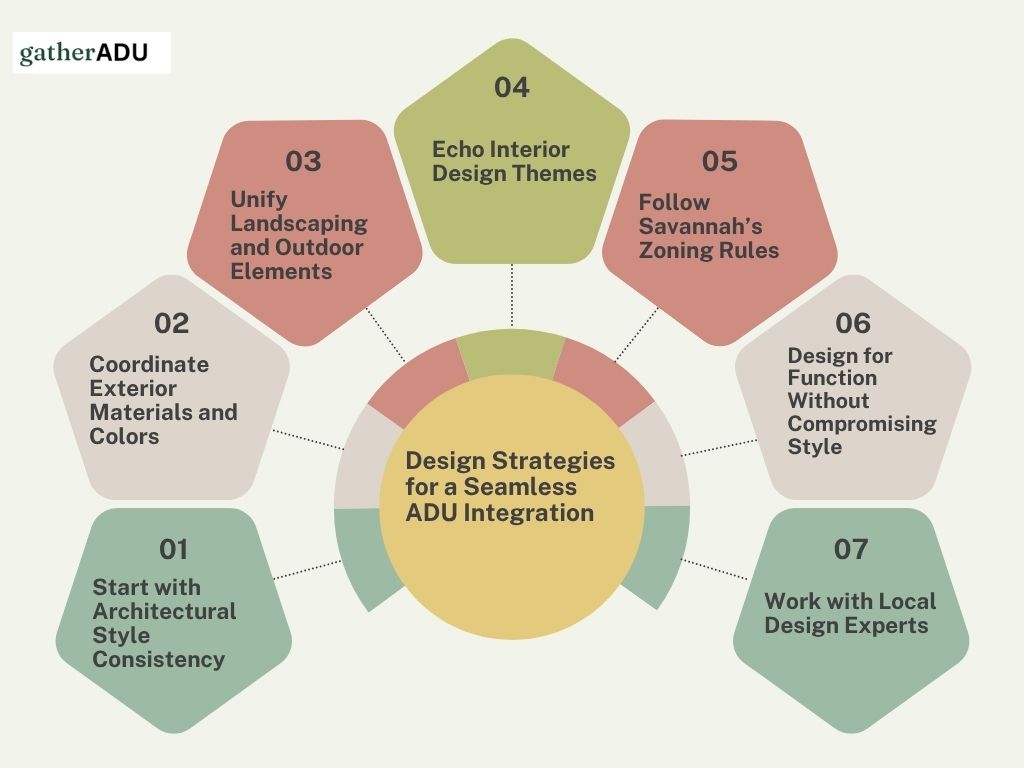ADU Knowledge
August 10, 2025
Match Your Main Home with a Cohesive ADU Design in Savannah

.png)
Schedule a free appointment with one of our ADU experts.
Get ADU QuoteOr call: (323) 591-3717
Matching your main home with a cohesive ADU design in Savannah starts with honoring the architectural character of your property and the surrounding neighborhood. From rooflines to materials and color palettes, every design choice should reflect and reinforce the style of your primary residence to ensure visual unity and maintain property value.
To make this process easier, Gather ADU specializes in designing and building accessory dwelling units that seamlessly integrate with your home’s existing aesthetic. Our Savannah-based team understands the local architecture, zoning rules, and design standards ensuring your ADU looks and feels like a natural extension of your property.

When planning your ADU, the goal should be cohesion not competition. A thoughtfully designed unit enhances curb appeal, aligns with Savannah’s architectural charm, and adds lasting value without looking out of place. Whether you're building for family use or rental income, a harmonious design will make the ADU feel like an organic part of your main property. Here’s how to ensure your ADU in Savannah feels like a natural extension of your home:
To achieve a seamless look, your ADU should echo the architectural style of your main home. Whether your property reflects Victorian, Craftsman, Colonial Revival, or Lowcountry design, staying aligned with these characteristics ensures aesthetic balance.
Key tips:
By mirroring these core architectural features, your ADU will blend effortlessly with the main home instead of feeling like a disconnected addition. This attention to detail not only preserves the visual integrity of your property but also respects the architectural heritage that makes Savannah neighborhoods so distinctive.
2. Coordinate Exterior Materials and Colors
In Savannah’s historic neighborhoods, using mismatched materials can make an ADU stand out for the wrong reasons. Choose the same or complementary siding, trim, roofing, and paint tones as your main home.
Pro tip: If your main house uses brick, wood, or tabby concrete, extend that material to the ADU’s facade for an authentic match.
Accessory Dwelling Units (ADUs) are gaining national attention as a viable solution to affordable housing shortages. A detailed case study published by the U.S. Department of Housing and Urban Development explores how ADUs are being used to increase housing supply, especially in urban areas with restrictive zoning. You can read the full report in the official HUD publication, “Accessory Dwelling Units: Case Study,” which provides data, policy analysis, and real-world examples of implementation across multiple cities.
Landscaping is a powerful design bridge. Shared pathways, patios, fencing styles, and native plant selections create a visual link between the main house and the ADU.
Also consider:
These outdoor details might seem minor, but they play a major role in visually connecting both structures. A unified landscape design not only enhances the overall flow of your property but also creates a welcoming, cohesive environment that reflects thoughtful planning. In a city like Savannah, where charm lives in the details, this level of coordination makes all the difference.
To maintain a cohesive feel, the ADU’s interior should mirror the style and atmosphere of your main home especially when used by family or long-term guests. Matching design elements like flooring, cabinetry, and color schemes creates a seamless transition between spaces. This thoughtful approach ensures comfort, familiarity, and unity across both living areas, enhancing the overall property experience.
Suggestions:
3. If your main home has Southern-inspired interiors, continue that warm, welcoming feel.
By repeating these interior elements, your ADU won’t just look connected it will feel like a true extension of your home. This level of consistency adds both emotional comfort for occupants and visual appeal for future buyers, making your investment more functional and valuable. A well-aligned interior design ties everything together beautifully, inside and out.
Savannah has strict regulations, particularly in historic districts. A well-matched ADU not only enhances your property but also helps with permitting. A unified design can demonstrate compatibility and reduce approval friction.
What this means:
By aligning your ADU design with Savannah’s local regulations and architectural norms, you not only simplify the approval process but also show respect for the community’s historic fabric. Thoughtful, compliant design strengthens your application and ensures your ADU contributes positively to the character of the neighborhood, something both city officials and neighbors will appreciate.
While your ADU serves a functional purpose whether as a rental, guesthouse, or studio it should never feel like an afterthought. Thoughtful design choices make even a small unit feel intentional and elegant.
Functional design tip: Use custom-built-ins, natural light, and open layouts to match the flow of your main residence.
When function meets intentional design, your ADU becomes more than just extra space it becomes an asset. Prioritizing both beauty and practicality ensures the unit serves its purpose while maintaining visual and spatial harmony with your main home. In a city like Savannah, where charm and utility go hand in hand, this balance is key to long-term satisfaction.
At Gather ADU, we specialize in building accessory dwelling units that feel like a seamless extension of your home both visually and functionally. We understand Savannah’s architectural traditions, zoning rules, and design expectations better than anyone.

Designing an ADU in Savannah can be overwhelming especially when you're trying to match historic architecture, follow strict zoning codes, and still create a space that’s livable and functional. Many homeowners struggle to balance personal style with neighborhood expectations, and the result is often a unit that looks out of place or gets delayed in permitting.
At Gather ADU, we take the stress out of the process by managing every detail from local code compliance to custom, cohesive design. Our Savannah-based team knows what it takes to build an ADU that complements your home and community. Visit gatheradu.com to see how we turn ideas into expertly crafted spaces that feel intentional, seamless, and fully integrated with your property.
An ADU is a secondary housing unit on a single-family residential lot. It can be attached, detached, or within the primary home. ADUs offer independent living facilities and are often used for rentals, aging family members, or extra income while utilizing existing property space efficiently.
No, ADU legality varies by state and city. Some areas encourage ADUs to combat housing shortages, while others have strict zoning or size restrictions. Always check with your local planning or zoning department before starting construction to ensure compliance with current local ordinances and codes.
ADU construction costs vary widely, typically ranging from $80,000 to $300,000 depending on size, location, materials, and type (detached vs. garage conversion). Permits, design fees, and utility connections also impact total cost. Some cities offer incentives or loans to help offset these expenses for eligible homeowners.
Yes, many homeowners rent out ADUs to earn rental income. However, rental rules vary by municipality. Some allow short-term rentals like Airbnb, while others limit use to long-term tenants. You must comply with local laws, tax requirements, and possibly register the unit for rental purposes.
Yes, ADUs typically increase property value by adding livable square footage and rental potential. Appraisers often factor in the extra unit’s income stream or cost of construction. However, added value depends on location, market demand, and how well the ADU integrates with the main property.
.png)
Not sure where to start with your ADU project?